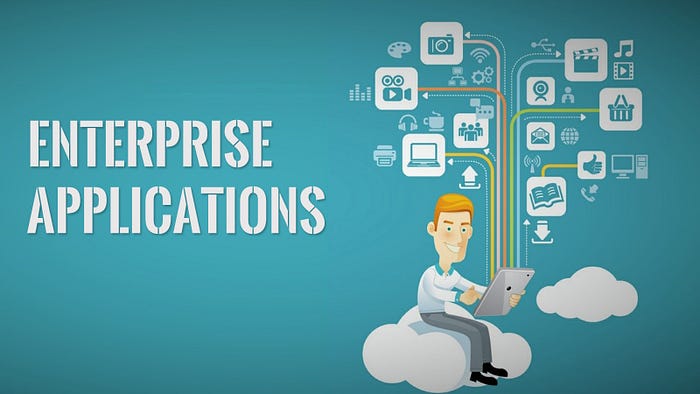What are Enterprise Applications? Definition, Examples & Use Cases in 2024

2024 and Beyond: The Power of Enterprise Applications
In today’s digital landscape, efficiency reigns supreme. For large organizations, enterprise applications (EAs) are the secret sauce to achieving this efficiency. But what exactly are EAs, and how do they empower businesses?
Demystifying Enterprise Applications
Imagine a software system specifically built for the intricate needs of large corporations. That’s the core concept of an enterprise application. EAs are feature-rich and scalable, designed to automate workflows, manage massive datasets, and ultimately propel an organization’s productivity. They act like conductors, orchestrating various aspects of a company’s operations, from finance and human resources to customer service and supply chains.
Examples of EAs in Action: Driving Business Value
The world of EAs is vast, encompassing a diverse range of solutions tailored to address specific business needs. Here are some of the most common types of EAs and how they’re making waves in 2024:
- Customer Relationship Management (CRM) Systems: These are the go-to applications for managing customer interactions. CRMs empower businesses to store customer data, track interactions, personalize marketing efforts, and cultivate stronger customer relationships.
- Enterprise Resource Planning (ERP) Systems: Think of ERPs as the central hub of a company. They integrate various departments like finance, manufacturing, and inventory, providing a unified view of all core business processes.
- Human Capital Management (HCM) Systems: Managing a workforce requires a strategic approach. HCM systems streamline tasks like payroll, recruitment, and performance management, fostering a happy and productive workforce.
The Transformative Power of EAs in 2024
EAs offer a multitude of advantages that extend beyond just automation. Here’s how they’re propelling business success in 2024:
- Enhanced Customer Experience: By leveraging CRM systems and customer service applications, businesses can provide personalized customer interactions, resolve issues efficiently, and build brand loyalty.
- Improved Operational Efficiency: Enterprise applications automate manual tasks, streamline workflows, and eliminate data redundancy. This translates to significant cost reductions and faster completion times.
- Data-Driven Decision Making: Modern EAs are treasure troves of data. Businesses can leverage analytics tools within these applications to gain insights into customer behavior, market trends, and operational performance, enabling data-driven decision making.
The Future of Enterprise Applications: Embracing Innovation
As technology evolves, so do EAs. Here are some key trends to keep an eye on:
- Cloud-Based Solutions: Cloud computing is on the rise, and EAs are following suit. Cloud-based EAs offer greater scalability, flexibility, and accessibility for businesses.
- Artificial Intelligence (AI) and Machine Learning (ML): AI and ML are transforming EAs, enabling features like intelligent automation, predictive analytics, and chatbots, further enhancing operational efficiency and customer service.
In conclusion, enterprise applications are the bedrock of modern businesses. By automating processes, effectively managing data, and providing valuable insights, EAs are essential tools for organizations to thrive in today’s competitive environment. As technology continues to advance, we can expect EAs to become even more sophisticated and powerful, shaping the future of business operations.


Comments
Post a Comment